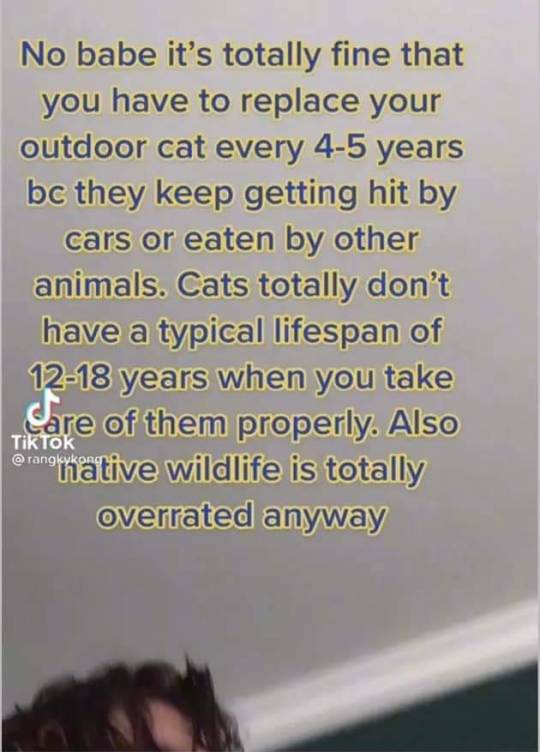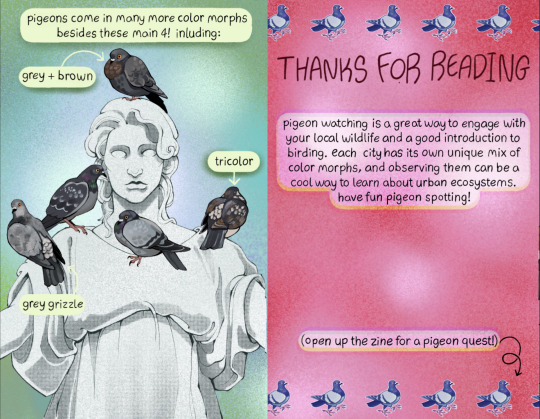Text
Munchkin cats are a genetic abomination and no, I will not apologise.
Yeah, these cats are cute, and they themselves do not deserve hate (after all, it's us humans who intentionally breed and sell them and label their genetic defects 'adorable') but as you can probably tell, I hate the breeding and selling of these cats. It is cruel.
First, let's compare the munchkin cat's stature to that of a normal cat. Munchkin cats' legs can vary in length, though most purebred Munchkin cats will have legs shorter than that of a typical domestic cat. Many breeders have begun to group Munchkin cats based on their leg length.

From left to right: Non-munchkin (legs not short), 'standard' (legs shorter by 1-2"), 'super-short' (legs shorter by 2-3"), 'rug-hugger' (legs shorter by 3+")
As you can see, Munchkins, especially the super-short and rug-hugger varieties, have shockingly short statures. It can be hard to see just how extreme the difference is until you compare them to a standard cat. Still, how is this a problem?
Well, for one, it restricts natural behaviours. Cats are naturally semi-arboreal. They are born with the instinct to climb and jump. Their brains are wired to find comfort and security in high places.
A typical domestic cat can easily, and will gladly, jump up to 100 centimetres (2 ft, 3"). Most typical domestic cats can even reach heights of 150-180 centimetres (4 ft, 11" to 5 ft, 10").
Due to the Munchkins' short legs, the height they are capable of jumping is restricted. The standard Munchkin may be able to jump almost as well as a typical cat, perhaps up to 140 centimetres (4 ft, 7"). However, there is no way a super-short or rug-hugger Munchkin could jump so high.
You can really see the difference in abilities in these two videos:
A typical (non-munchkin) cat jumping heights of up to 101 cm (40")
A Munchkin cat jumping approximately 80-90 cm (31-36")
Cats, even Munchkins, have the instinct to jump and a love of high places. Taking an animal that needs to and loves to jump but physically cannot is unbelievably cruel. It can cause stress and frustration to the cat and, if the cat regularly attempts to jump but fails, may result in injury.
"But if standard munchkins can still jump, why not just breed them. The point on natural behaviour only applies to some munchkins, so you've got to give me more than that to convince me this breed is suffering!"
May I present you with skeletal deformities as a point then?
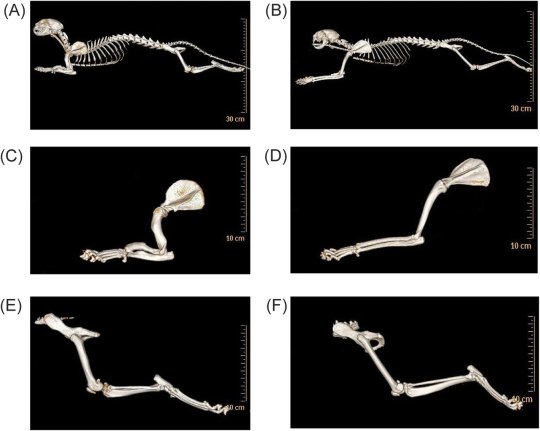
The genetic mutation causing the short-legged trait in Munchkins is referred to as achondroplasia, the genetic disorder that results in dwarfism.
This disorder is associated with multiple conditions, exhibited by the vast majority, if not all, Munchkin cats (yes, including the 'standard' variety.
A shortened, bent ulna and radius.
Lordosis - excessive curvature of the spine due to shortened muscles.
Pectus Excavatum - horizontal narrowing of the chest due to sternum and costal cartilage deformities.

(above) one of the two Munchkins rescued and adopted by Gatehouse Veterinary Centre in Wrexham, UK. The two rescue Munchkins, Bonnie and Clyde, experience issues typical of the Munchkin. They are both on long-term pain relief as well as joint supplements.
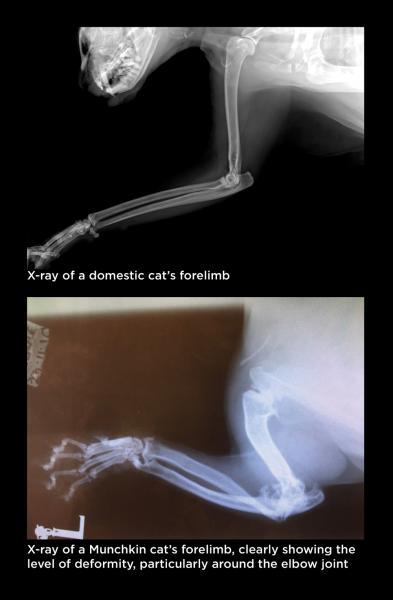
The Munchkins' skeletal deformities drastically increases the chance of severe Osteoarthritis. They are also susceptible to developing arthritis at a much younger age than a typical cat.
This condition causes a lot of discomfort and pain in the joints. It can restrict a cat's ability to jump, which, for a Munchkin (a breed that is already restricted in terms of activity), is not good.
Osteoarthritis requires regular medication to manage the pain, as well as decreased activity, which can be very distressing for a cat, who has no idea why they feel the way they do.
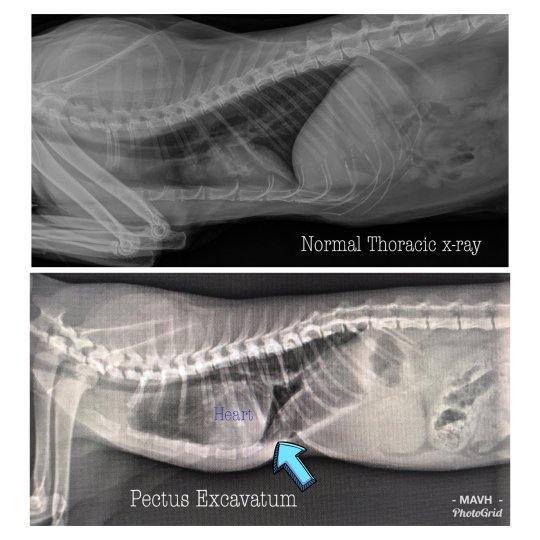
Pectus Excavatum is also frequently exhibited in Munchkins as a result of the gene that causes their shortened legs.
Pectus Excavatum is a condition in which, as a result of malformation of the sternum, the chest is narrowed.
This reduces space for the heart and lungs. Depending on the severity of the condition, cats with Pectus Excavatum may experience severe cardiac and lung problems, causing difficulty breathing and increased respiratory rate.
This is NOT a rare condition in Munchkins.
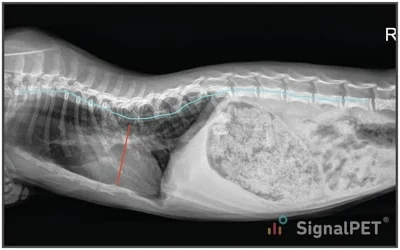
Lordosis is a term for excessive curvature of the spine. It is caused by shortened muscles and the impaired posture and gait having shortened legs (especially on the front side) causes.
Lordosis can cause back and shoulder pain, which can severely and negatively impact a cat's quality of life.
Over time, severe cases of lordosis in cats may cause gait changes and/or weakness.

Unfortunately, due to the Munchkin's skeletal deformities and high incidence of severe Osteoarthritis, their average life expectancy is shorter than that of a non-Munchkin cat.
While the average life expectancy of an indoor Domestic Shorthair (cat of no breed) is 15-20 years, the average life expectancy of an indoor Munchkin is 12-15 years, approximately 5-8 years shorter than a typical cat.
The Munchkin cat's abnormally high incidence of medical problems, restricted natural behaviours, and shortened life expectancy has led to legal restrictions being put in place in some places to prevent the further suffering of these cats.
In the Netherlands, as of 2014 it is prohibited by law to intentionally breed Munchkins. This is the same case in Victoria, a state in Australia.
The Australian Capital Territory (a territory in Australia) government considers Munchkin cats to be "malformed animals" and the breeding of them "unnaceptable" due to the "genetic health problems associated with such breeding".
For the health and welfare of cats, we need to ban the breeding of Munchkins worldwide.
Please, do not purchase a Munchkin from a breeder or pet store as this encourages the breeding of these cats. If you really want a Munchkin and you're prepared for the issues the cat will likely face, search for a Munchkin at local animal rescues.

Sources
https://www.petmd.com/cat/breeds/munchkin
https://icatcare.org/advice/munchkin/
https://kb.rspca.org.au/knowledge-base/what-are-the-health-and-welfare-issues-associated-with-exaggerated-physical-features-in-cats/
https://www.ufaw.org.uk/cats/munchkin-limb-deformity
https://thelittlecarnivore.com/en/blog/munchkin-cat-do-they-suffer-health-issues-and-ethics
https://www.petrebels.com/en/cat-breeds-munckin/
7K notes
·
View notes
Text
New Posts soon I promise 🙏 I don't know how cat and bunny people have pet picture filled blogs because mine like to do the same thing every single day and the moment they aren't it's always unable to be captured in a picture. Sad, really.
0 notes
Text

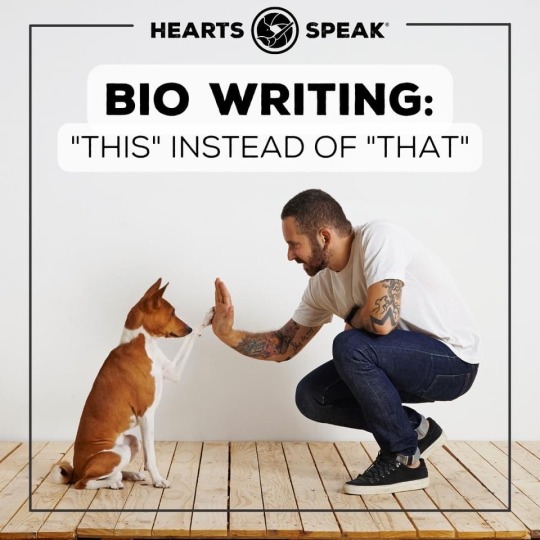
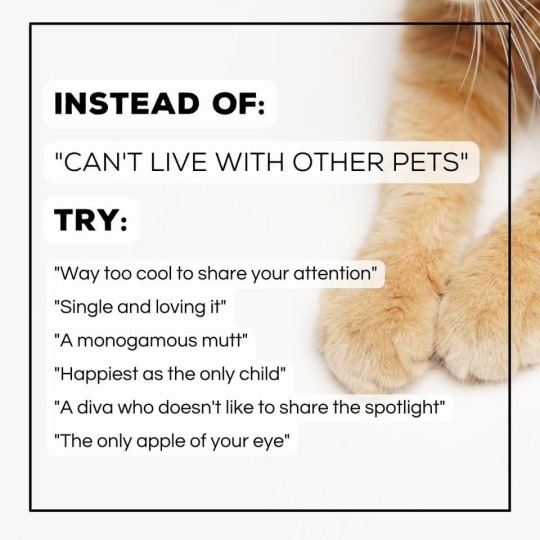




remember: animal shelters/rescues will lie to trick you into adopting an animal with severe behavioral issues.
if you’re going to adopt an animal from a shelter/rescue, be cautious. don’t support irresponsible rescues.
4K notes
·
View notes
Text
Ok so update on what I posted earlier, turns out Wrynn started having issues with hematochezia (look up at your own discretion) and that was at it's absolute WORST at labor day. Since it was the holiday unless she was literally dying I couldn't get her seen since I don't have a ton of emergency vets and they were all filled to the brim with dogs who got into stuff they shouldn't've. Day after I got her into my usual and luckily instead of being something extremely life-threatening, it's just gastritis. So she got a Cerenia shot, IV, and 5 days on Metronidazole Compound. It's been a few days and she's feeling much better but not fun (doubly so now that she's healthy and strong enough to try to fillet me when I give her meds since apparently it doesn't taste good.) 🥴 Always fun times after I get my paycheck.
0 notes
Text


Endemic to the Wolf and Darwin Galápagos Islands, the Vampire Ground Finch is a rare bird that drinks the blood of other living birds. During times of extreme drought, this unusual blood-drinking behaviour is crucial in the finch’s survival.
8K notes
·
View notes
Text

sometimes life is very boring and no one will throw ANY frisbee at ALL and all you can do is curl up in your new pallet bed and bitterly eat pieces of your headrest
11K notes
·
View notes
Text
I need to update this blog more, I just tend to upload most pet/animal stuff to my main and forget I have this blog. I just spent a week dog sitting and it went loud lol. Wrynn's been actually getting on my bed instead of to the side and been a lot more happy in general, even if my mom still thinks she hates her and my cousin who comes over weekly is scared of her. Lol. I did get home to Abel having GI problems so he probably got into something he's allergic to so hopefully it'll pass and I can find out what it was. Cain and the Buns are all doing fine with nothing new, all being sweet and happy. Update done!
0 notes
Text
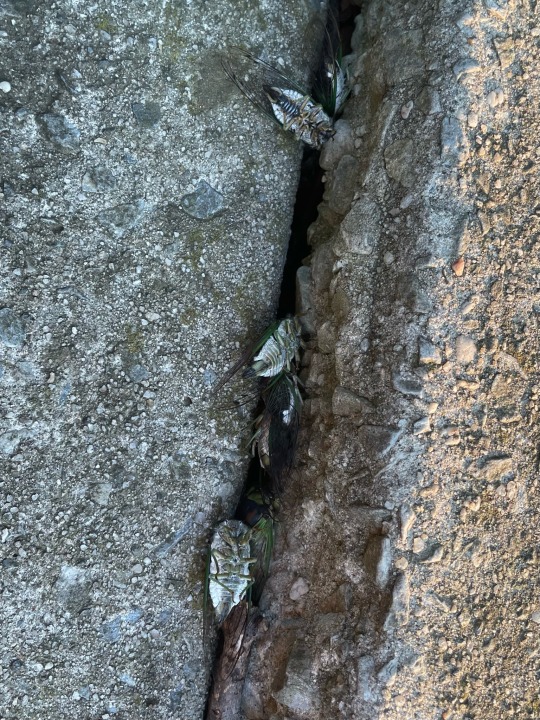

a cicadakiller wasp dug a burrow in a crack in the sidewalk, but the prey she gathered to feed her larvae couldn’t fit! she’d gathered five Neotibicen tibicen & two N. linnei, likely all today. I plugged the entrance, so hopefully she’ll start a successful burrow somewhere else.
she can’t use these cicadas anymore (instinctual one-way trip from tree to burrow behavior), so I took them. they’re still alive, which is a little creepy, but totally unable to move due to her sting.

…I don’t have room for this many pinned cicadas though, so I’ll probably parcel a few out to local yellowjacket nests, which will be fun to watch!
5K notes
·
View notes
Text
i also don't see zoos as like, a "necessary evil" that will go away when we've ended capitalism and learned to live more sustainable lives or whatever.
for starters, i don't believe conservation is an issue that will ever end. for example, certain species are inherently more vulnerable to extinction, and those species may need a helping hand if disease or natural disaster strikes their populations. this is especially true of species with slow reproductive cycles or small populations, or extremely limited habitat. working with these animals and having a captive stock of them will be vital should something happen to their wild populations.
but also zoos serve another function beyond conservation, and that's education. zoos offer people the ability to really connect with animals they may not ever see in the wild, whether because the animal is very secretive, it doesn't live near the people visiting the zoo, or the people don't have the ability to go out on hikes or whatever and observe them in the wild. it's hard to become passionate about something that only exists in the abstract, and it's hard to want to learn about something you have no concept of. people are also scared of things they don't understand, which leads to conflict between humans and animals. good zoos create a space where people can safely observe happy and healthy animals and get to know them without either party being pushed past their limit. this fosters passion for, interest in, and respect for animals that people might not care or even know about otherwise.
2K notes
·
View notes
Text



I think this is super important to remember.
133K notes
·
View notes
Note
So foxes don't naturally avoid incest? Does that not cause problems for them even when there is a healthy population number of foxes?
Foxes strategy for avoiding incest is that the cubs will move out of their parents territory in Autumn before the breeding season starts and travel many miles away from where they were born. During this time of year food starts to become harder to find, so the parents become more aggressive towards the cubs in order to drive them away, as there wouldn't be enough resources for them all to survive the winter in the same area.
Problem is, in urban areas people feed them so much that the cubs have no reason to leave. There's more than enough food for all the foxes so the parents don't have the same motivation to drive the cubs out, and the cubs don't want to give up an easy life. That leads to a lot of inbreeding in urban populations, which may be partly why they suffer so much from disease. Health conditions, such as dwarfism and genetic dental disease, are also cropping up more commonly in urban foxes and may be related to inbreeding.
560 notes
·
View notes
Photo

Source: [x]
Follow Ultrafacts for more facts!
79K notes
·
View notes
Text
Update to academic smackdown of "Do Dolphins Live in Impoverished Environments"
So the people who wrote the paper claiming that dolphins and elephant brains in zoos are exactly like mouse brains in impoverished environments (Jacobs et. al 2021) (A maaajor reach considering 1) dolphin and elephant brains are nothing like mouse brains and 2) dolphins and elephants in zoos do not demonstrate an inability to learn new things)
Well they have beef with the paper that came out criticising their "work."
Of course, instead of writing a rebuttal they wrote a bitchy Facebook post about it.
Let's break it down shall we?

No no no, you see. That was what your paper did. You used the comparison of lab rats to zoo animals and said that the two were exactly the same. "She never seems to understand that a natural environment is more enriching than an artificial one" just SCREAMS "I have never worked with these animals before." Because guess who decides what is and isn't enriching? THE ANIMAL.
A natural environment for dolphins may have live fish, currents, tides, waves ect. But that can quickly become a stressor. As we've just seen Little Grey from the beluga sanctuary developing stress related stomach ulcers within days of being put into in the sea pen.
This is the naturism fallacy at it's most obvious.
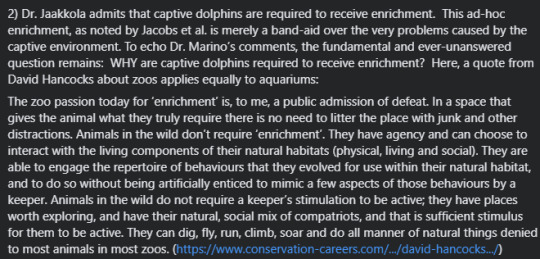
"Enrichment is, to me, a public admission of defeat." I'd be insulted on behalf of every single team developing amazing enrichment plans for their animals if this wasn't so obviously ignorant.
You know what wild animals spend most of their time doing? Trying not to die! That's why they don't need enrichment! And even then, you still get animals that like to engage in object play with anything they find (eg. dolphins throwing around sponges or Kea birds ripping apart car bumpers and windshield wipers).
So, in lieu of the whole trying not to die thing, animals in zoos get more opportunities for play. Animals in zoos can absolutely "fly, run, climb and soar" too - but without a reason (like trying not to die) they won't pointlessly expend energy. So enrichment gives them opportunities for that! Hooray!

This study never actually examined orca, elephant, dolphin or porpoise brains from animals living in human care. Not one. Yet it claimed that these species were suffering from brain damage and neurological damage.
It also blatantly ignored the recent examination of cetacean brains by the late Dr. Sam Ridgeway, that found no such brain damage or comparable differences between wild and captive dolphin brains.


I know for a fact some of the authors of these papers were invited to examine captive dolphin brains by scientists who work with them and were refused.
It's so obvious these people are not interested in having a discussion based on actual data but are more interested in already having an answer and working their "data" to make it look like they have it right. And, of course, to make sure the media outlets pick it up too.
46 notes
·
View notes
